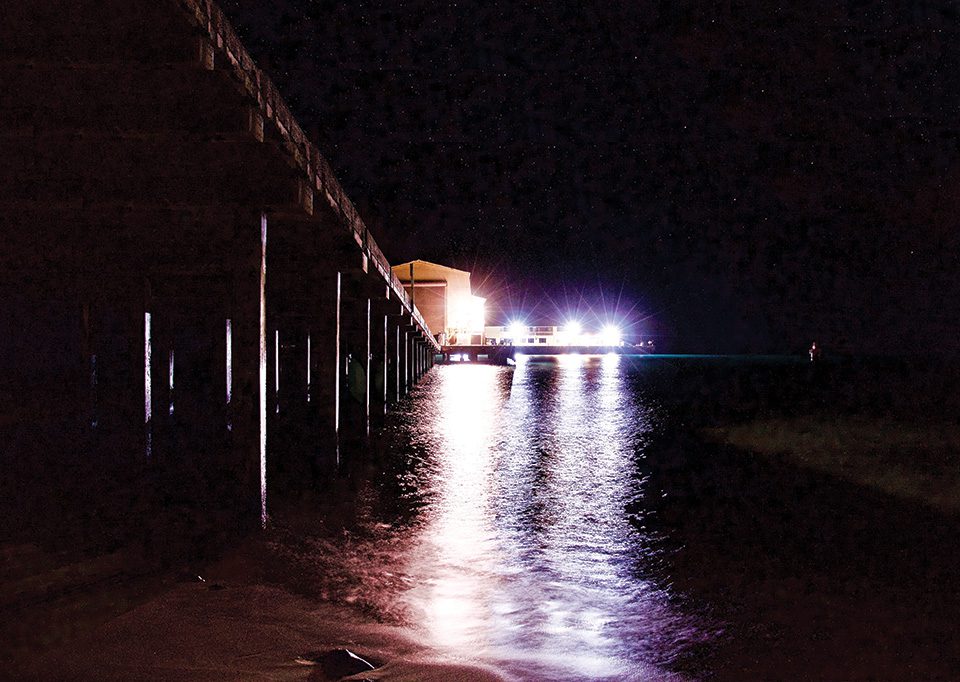
By John Saporito
Predatory fish are masters of finding lucrative feeding opportunities, which occur at the intersection of food availability and an easy way to capture prey. One of the best examples of this is when shadows are present in the water. The darkness of a shadow makes a perfect ambush point for predators, which usually wait just inside the shadow to lunge out at prey swimming in the lighter water or wait for prey to enter the darkness and pounce on the free meal.
Sometimes, gamefish will be found in the lighted water itself. These fish are positioned to intercept bait that emerges from the darkness and is temporarily stunned by the transition from dark to light. But shadows are more than just an ambush point. The predators themselves like cover for their own protection; the darkened water offers them shelter where they are not so easily spied by even larger predators.
Shadows are found in both freshwater and salt and create feeding opportunities day and night. Their best application in fishing, however, is when they occur at night in conjunction with artificial light. Light from a roadway, bridge, or dock will carve a deep shadow in the water where it is interrupted by a solid object. And not only is the transition between shadow and light profound, but baitfish and other small creatures are attracted to light, as they hope for their own opportunity to feed.
This is a win-win for predators and anglers alike. The icing on the cake is a moving current that sweeps bait near the structure that is creating the shadow. This is the ticket to locating concentrations of both predator and prey, the critical ingredient in the recipe for productive shadow fishing.
There are two places in the water column for fish to be in a shadow line situation: just below the surface and at the bottom. Subsurface fish give you the chance to see exactly where your quarry lies and where your casts should land. Fish on the bottom won’t be visible to you, but they are less wary and more likely to strike at your offering.
Both natural bait and artificial lures work on shadow feeders, although lures really perform well once you have learned what predators are looking for in a target. The key is that a lure can be manipulated to do what its user wants more effectively than both live bait—which has a mind of its own—and dead bait, which does not move as well as artificials do.
Strikes often take place when the offering is maneuvered parallel to the shadow line itself, in the lighted water just beyond the darkness. Natural presentation can be learned from first-hand observation wherever shadows and fish are found. Watch how prey moves between the light and dark; study how and when predators make their attack. Experience is the best way to improve your approach.
John Saporito is a lifelong fisherman and student of the seas. Visit him online at guerillaangling.com.